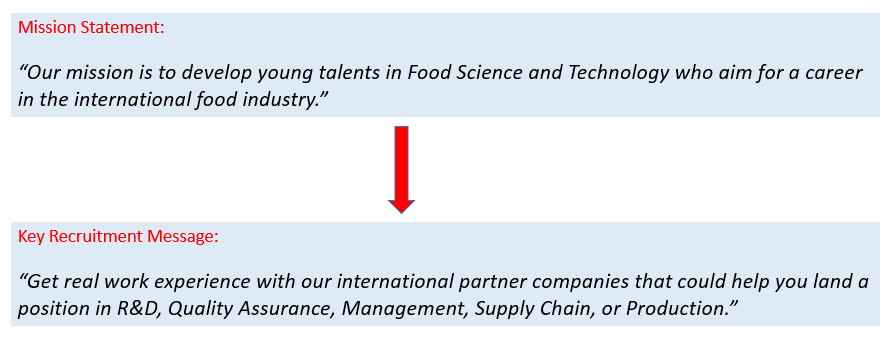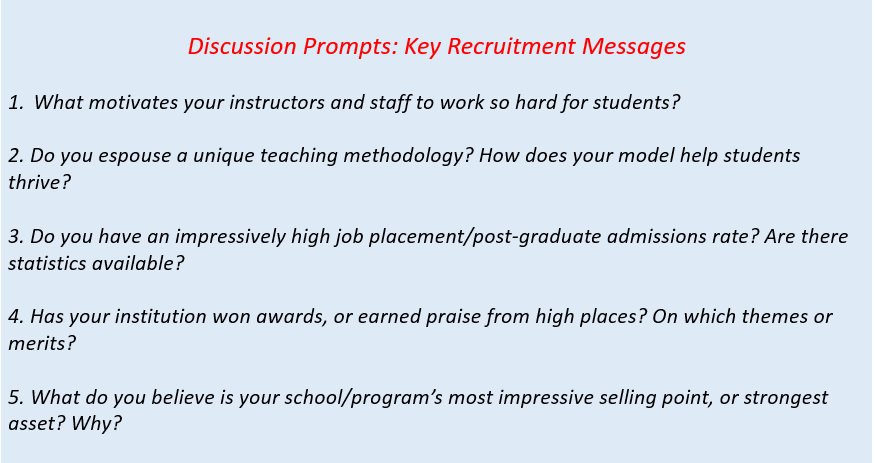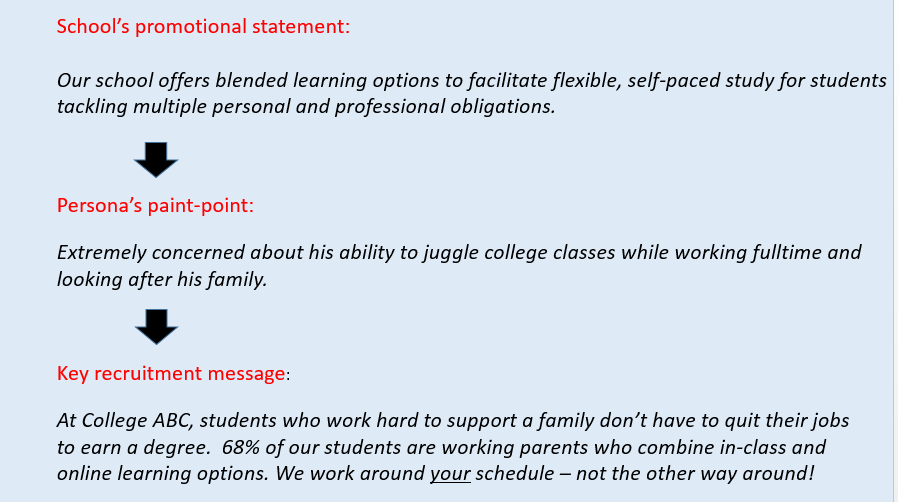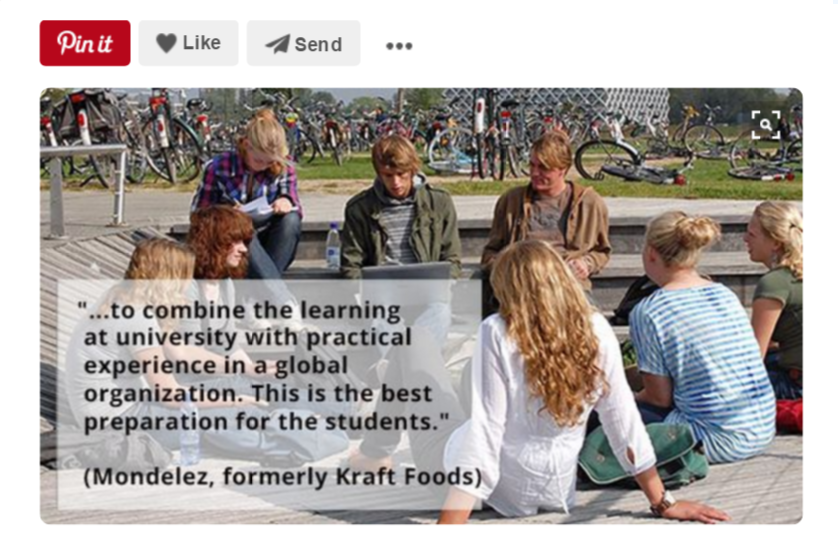
Marketing pundits predict that “content personalization” will continue to dominate the industry throughout 2016 (and beyond), as businesses and organizations of all kinds strive to make more meaningful connections with targeted audiences. Over 20% of marketers report that publishing original, audience-customized content will be their top focus this year.
At the same time, experts are warning that the content market is over-crowded. As more brands jump onboard the publishing bandwagon, it’s likely we’ll face what Forbes calls “a flooded market” where “quality of content will matter over quantity, and only the best will survive.”
So how can educational institutions stay ahead of the curve and produce content that will survive the deluge?
By resisting the urge to publish before planning.
There are so many publishing channels and options out there, that many schools are tempted to jump right in, before thoroughly mapping out the specific messages they need to convey.
The inevitable result? Muddy messaging. There is no consensus throughout and across departments about what your school stands for, who your target audiences really are, and how your institution is uniquely equipped to meet their needs.
This is why more and more schools are investing in persona research and development; they understand that recruitment marketing is most effective when it is strategically targeted, rather than mass produced.
But well developed personas are only half the story. Every educational institution needs key recruitment messages to help refine their brand and guide the development of customized content that will actually attract personas, generate inquiries, and prompt enrollment.
What Exactly Are Key Recruitment Messages?
Key recruitment messages “unpack” your mission statement and core values to show how these are ideally aligned with the wants and needs of your target audience. Where mission and values statements are often quite philosophical and broad, key recruitment messages are specific and direct. They make it crystal clear how your school can help students achieve their goals, and overcome what your research has identified as their primary enrollment roadblocks.
Before you begin mapping out a content strategy for student recruitment, it’s crucial to articulate perhaps 7-10 key messages that connect these critical dots.
Here is an example from the European Master of Food Studies. Their general mission statement has been refined into a targeted key recruitment message. They have several more, of course; this particular message focuses specifically on professional outcomes.

Clearly, EMFS knows that the majority of their target audience is interested in gaining real-world experience during the master program – and is focussed on earning specific positions within the food industry (R&D, management, supply chain, etc.).
This key recruitment message adds weight and substance to the mission statement by explaining precisely how EMFS “develops young talents” and prepares them for successful careers.
A collection of 7-10 key messages like this gives schools a point of reference for content development. Whether you’re writing a new page for your website, crafting a Pay-per-Click landing page, or looking for ideas for blog posts – you’ll know exactly which themes to target and build on, to generate maximum interest and engagement from your particular personas.
But we’ll get to content creation in a moment. First, let’s look at some concrete strategies for formulating impactful key messages that both reinforce your school brand AND connect with your audience.
4 Tips for Writing Impactful Key Recruitment Messages
Bridging the gap between overarching institutional statements and super-detailed, persona-targeted messages is no easy feat. When HEM works with schools to define key messages, we follow a set of steps that breaks this process into phases; each stage builds on the next, and the approach usually works quite well.
Here are a few ideas for mapping out your own key recruitment messages.
1. Gather a team (or at least one other person!)
Don’t tackle key recruitment messages in isolation. Get as many admissions and recruitment personnel, faculty members, and administrators on board as possible to weigh in on this process.
Working with an agency? Ensure they ask your team plenty of questions, and are open to feedback and revision after submitting key messages for your approval.
2. Write down everything that makes your school/program unique and wonderful
Take an hour (or two) to talk with your team about what truly differentiates your institution or program. Consider what special attributes you bring to the table, and the various ways in which you facilitate student success. Not sure how to get this conversation started, or keep it on track? Here are a few prompts to build on:

Distill your team’s responses into a list of phrases everyone can buy into. These self-promotional statements are the raw material for your key recruitment messages.
3. Consider your list from your persona’s perspective
Take a look at your persona; specifically their priorities and pain points. The key recruitment messages you write must resonate with those goals, and seek to neutralize those pain points.
Similar to the EMFS example we looked at earlier, you’ll need to refine the self-promotional phrases you developed into detailed, personalized statements your audience will care about.
Here’s an example most educational institutions can probably relate to:

Many schools simply stop at the generic, self-promotional phrase. It gets replicated, in one form or another, across all of their marketing materials and online channels. But how many prospective students will really feel moved by this somewhat abstract promise? It’s just not specific enough to engender trust and prompt inquiry. It is institution-centered, rather than persona-centered.
Unpacking those promotional ideas into relatable, substantiated messages is what it’s all about. Done right, your key recruitment messages will spark a wide range of personalized content and campaign ideas – outreach that is sure to resonate with and motivate your personas. The sample key message above, for example, could lead directly to the development of highly targeted content, such as:
- Video testimonials from working students who have benefited from your flexible learning options (for your website, social channels, emails, landing pages, etc.)
- Blog posts that offer tips on juggling work and school (with inspiring quotes from the above testimonials to offer proof that your students have done it)
- Interviews with your faculty, talking about how they work with students to accommodate busy schedules
- Stats for your website on how many working students you enroll each year (and your graduate job placement rate, if possible)
Flesh out the rest of your key messages by tackling each of your persona’s perceived roadblocks to enrollment – and their educational/professional goals. Talk about how what makes you so unique as a school is also uniquely beneficial to your future students. The customized content will flow from there.
Additional Tip:
If you have more than one persona (international students/alumni/parents), remember to create distinct recruitment messages for each segment. You’ll likely see a bit of overlap here, but there should be clear differences between these key messages.
4. Avoid education buzzwords
I’d like to preface this part by admitting I’ve used many of these “buzzwords” when describing educational models, institutions, classrooms, and programs. After all, in and of themselves, they’re perfectly good words!
Unfortunately, their overuse by academics and education marketers have stripped away their impact and muddied their meaning. And while words like these will often find their way into a school’s mission statement, they’re far too ambiguous to really help with targeted content creation.
Marketing firm, New City comically equates education buzzwords with a “higher-ed swear jar.” And they’re right. But it’s not just universities and colleges who fall prey to this rhetoric; K-12, language schools, and career training programs are just as culpable.
Buzzwords can make the most well-intended brand identity seem generic and hollow. And they’ll most certainly dilute the potency of your recruitment content.
Here are a few little gems to avoid when putting together your key recruitment messages.

Distribute Key Messages to Recruitment Staff
Worried that your front-line admissions staff are all saying different things about your school to prospective students/parents? Is the person following up on new inquiries by email hitting the same notes as the person who manages your social media?
Inconsistency across channels and among admissions staff is common. One way to put it to rest is by distributing your newly crafted key recruitment messages to everyone who interacts with prospective students.
Ferris University has published their key messages on the Advancement & Marketing section of their website with the purpose of unifying communications across all channels:

Use Key Recruitment Messages as Touchstones for Content Creation
Wondering how to angle your next blog post, social media campaign, email message, or landing page?
Look no further than your key recruitment messages. Every time you sit down to work on content strategy and development, your efforts will be guided by those messages. They reflect the issues that matter most to your personas, so it makes sense to use them as touchstones for targeted, personalized content.
Here’s an example of how the European Master in Food Studies (EMFS) wrote a blog post directly inspired by the key recruitment message we looked at earlier:

And here’s the blog post that builds on this theme, explaining the value of hands-on experience during the master, and how practical placements (like the one EMFS offers students) gives grads a competitive edge:

And here’s the same recruitment message, echoed in a Facebook post on the familiar “Why Choose Us” theme:

And again, the same messaging on the EMFS Pinterest page, where one of their partner companies (who often employs grads) reinforces the value of the program’s practical training component:

Blog posts, website pages, social media posts, email marketing, brochures and print materials, descriptions of your institution on educational portals – these are all opportunities to elaborate on and amplify your key recruitment messages in meaningful ways.
The result? You build an intentional, coherent brand identity that resonates on a personal level with the prospective students you want to attract.
Has your school or program worked on writing key recruitment messages? Willing to share tips or advice on what process worked best for your team? We’d love to hear your comments below.






